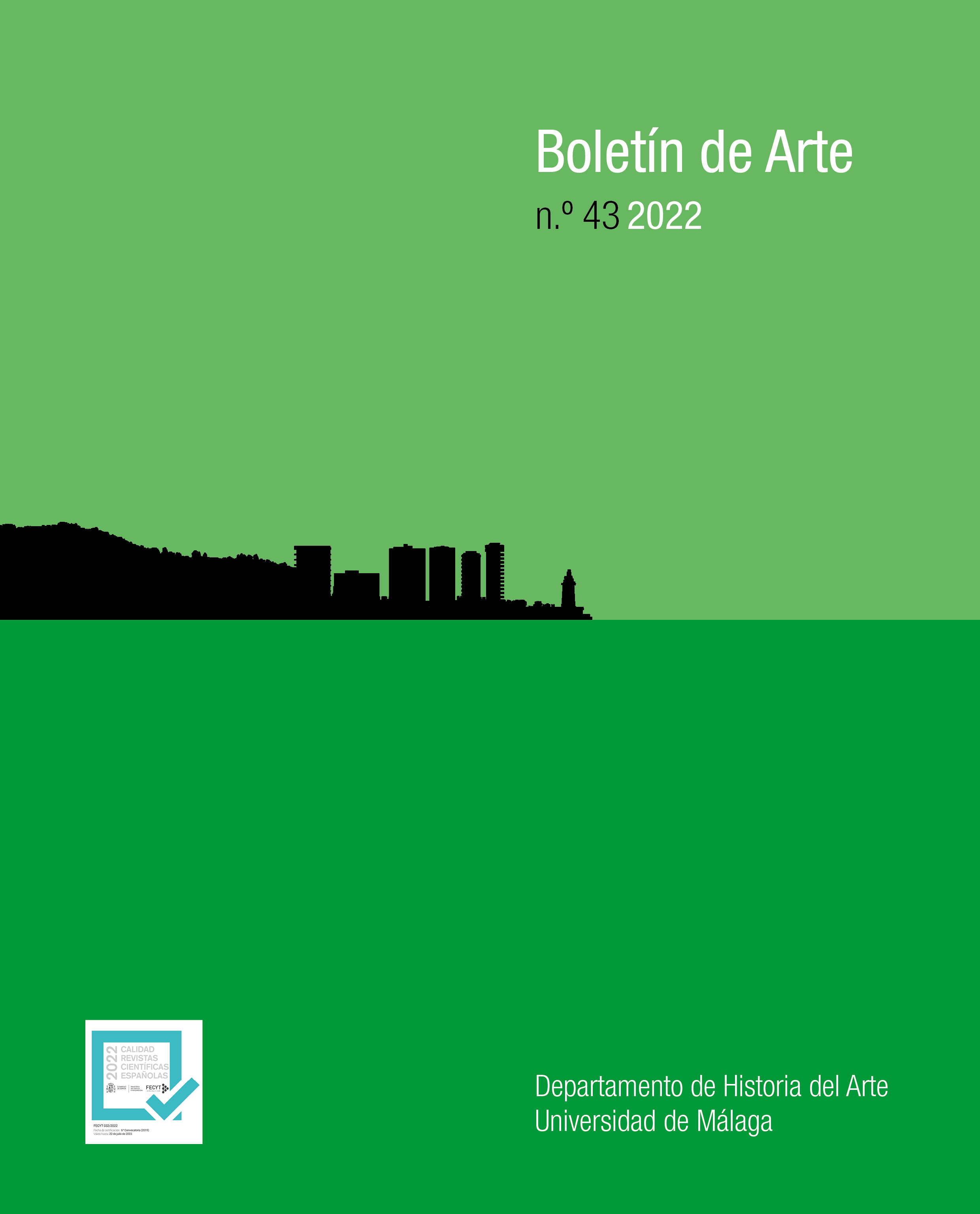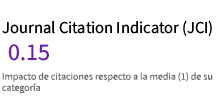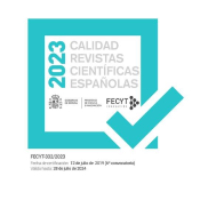Revulsive Art against Touristification
DOI:
https://doi.org/10.24310/BoLArte.2022.vi43.14189Keywords:
Contemporary art, Touristification, Tourist gentrification, Collaborative activism, Protest movements, Sociology of art, Social responsibilityAbstract
The rapid and intense touristification of city centres emerged before the outbreak of SARS-CoV-2. It consolidated itself as a global phenomenon that affected both established and emerging global tourist destinations. Its ramifications managed to disrupt local ecology and forced the residents to face various challenges such as loss of identity, social inequality and the demographic emptying of urban centres. In this scenario, the subversive potential of the hybrid practices that link art and activism assume its social commitment to the problems and demands arising from an oversized model of tourist travel. This article explores descriptive case studies that, in their respective transcultural spaces of production, share a common critical perspective on the resulting tourism model. Specifically, the profiles and sensitizing reflections of Left Hand Rotation in Lisbon, Banksy in Venice and Alejandro Villén in Malaga are examined, as well as the collective exhibition Alicántropo in Alicante.
Downloads
Metrics
Publication Facts
Reviewer profiles N/A
Author statements
Indexed in
-
—
- Academic society
- N/A
- Publisher
- Universidad de Málaga.
References
BANKSY (2019), Venice Oil [Instagram]. En: https://www.instagram.com/banksy/ (fecha de consulta: 16-11-2021).
BLANCHÉ, Ulrich (2014), Konsumkunst, Kultur und Kommerz bei Banksy und Damien Hirst. Transcript Verlag, Bielefeld.
CALLE VAQUERO, Manuel de la (2019), «Turistificación de centros urbanos: clarificando el debate», Boletín de la Asociación de Geógrafos Españoles, vol. 83, n.º 2829, pp. 1-40. DOI: http://dx.doi.org/10.21138/bage.2829.
COCOLA-GANT, Agustín (2019), «Gentrificación turística», Turistificación global, octubre, pp. 291-308. En: <https://www.researchgate.net/publication/336442161_Gentrificacion_turistica> (fecha de consulta: 31-05-2022).
CONTESTED TERRITORIES (s.f.), «Left Hand Rotation». En: <https://www.contested-territories.net/left-hand-rotation/> (fecha de consulta: 17-11-2021).
CRESPI-VALLBONA, Montserrat y MASCARILLA-MIRÓ, Óscar (2018), «La transformación y gentrificación turística del espacio urbano. El caso de la Barceloneta (Barcelona)», EURE, vol. 44, n.º 133, septiembre, pp. 51-70. DOI:http://dx.doi.org/10.4067/s0250-71612018000300051.
DELGADO, Manuel (2019), «La ciudad y los turistas», El País, 11 de octubre. En: <https://elpais.com/elpais/2019/08/27/seres_urbanos/1566931732_468441.html> (fecha de consulta: 13-12-2021).
FERRARY, Miguel (2018), «Alejandro Villén viraliza un dibujo protesta contra la invasión turística del Centro», La opinión de Málaga, 2 de noviembre. En: <https://www.laopiniondemalaga.es/malaga/2018/11/02/alejandro-villen-viraliza-dibujo-protesta-27903812.html> (fecha de consulta: 21-11-2021).
FIGUEIRA-RICARDO, Melissa-María et al. (2022), «Street art y grafiti como exponentes del turismo creativo. Potencialidades del destino turístico Holguín, Cuba», Recus, vol. 7, n.º 1, enero-abril, pp. 68-77. DOI: http://dx.doi.org/10.33936/recus.v7i1.4122.
GARCÍA HERRERA, Luz María, SMITH, Neil y MEJÍAS VERA, Miguel Ángel (2013), «Gentrification, displacement, and tourism in Santa Cruz de Tenerife», Urban Geography, vol. 28, n.º 3, mayo, pp. 276–298. DOI: https://doi.org/10.2747/0272-3638.28.3.276.
GIL, Javier y SEQUERA, Jorge (2018), «Expansión de la ciudad turística y nuevas resistencias. El caso de Airbnb en Madrid», Empiria. Revista De metodología De Ciencias Sociales, n.º 41, pp. 15-32. DOI: https://doi.org/10.5944/empiria.41.2018.22602.
GOTHAM, Kevin Fox (2005), «Tourism gentrification: The case of New Orleans» Vieux Carre (French Quarter)», Urban Studies, vol. 42, n.º 7, pp. 1099-1121. DOI: https://doi.org/10.1080/00420980500120881.
HUETE, Raquel y MANTECÓN, Alejandro (2018), «El auge de la turismofobia ¿hipótesis de investigación o ruido ideológico?», Pasos. Revista de Turismo y Patrimonio Cultural, vol. 16, n.º 1, pp. 9-19. En: <http://www.pasosonline.org/Publicados/16118/PS118_01.pdf> (fecha de consulta: 21-12-2021).
JIMÉNEZ-MORALES, Eduardo, MINGUET MEDINA, Jorge y CIMADOMO, Guido (2021), «Dos ciudades en la encrucijada del COVID-19. Paradojas y contradicciones del modelo turístico en el sur de España», en PUEBLA-MARTÍNEZ, Belén y VINADER-SEGURA, Raquel (coords.), Ecosistema de una pandemia. COVID 19, la transformación mundial, Dykinson, S.L., Madrid, pp. 2108-2129. En: <https://www.dykinson.com/libros/ecosistema-de-una-pandemia-covid-19-la-transformacion-mundial/9788413773285> (fecha de consulta: 23-12-2021).
JUDD, Dennis. R. (2003), «El turismo urbano y la geografía de la ciudad», Revista eure, vol. 29, n.º 87, pp. 51-62. DOI: http://dx.doi.org/10.4067/S0250-71612003008700004.
KOMNINOS, Andreas et al. (2017), «Where’s everybody? Comparing the use of heatmaps to uncover cities» tacit social context in smartphones and pervasive displays», Inf Technol Tourism, n.º 17, noviembre, pp. 399-427. DOI: https://doi.org/10.1007/s40558-017-0092-5.
LA PELUQUERÍA (s. f.), lapeluqueria.art, [Instagram]. En: <https://www.instagram.com/lapeluqueria.art/?hl=es> (fecha de consulta: 21-12-2021).
LEFT HANDROTATION (s. f.), «Terramotourism». En: <http://lefthandrotation.com/terramotourism> (fecha de consulta: 17-11-2021).
LLORENTE-HERAS, Raquel (2020), «Impacto del COVID-19 en el mercado de trabajo: un análisis de los colectivos vulnerables. Documentos de Trabajo», IAES, Instituto Universitario de Análisis Económico y Social, (2), pp. 1-29. En: <http://hdl.handle.net/10486/691084> (fecha de consulta: 10-12-2021).
MILANO, Claudio (2017), «Overtourism y Turismofobia: Tendencias Globales y Contextos Locales». En: <http://www.aept.org/archivos/documentos/ostelea_informe_overtourism_y_turismofobia.pdf> (fecha de consulta: 6-12-2021).
PEÑALVER, Thais (2019), «Arte clandestino para la reflexión: la huella del turismo masivo en Alicante», Alicanteplaza, 11 de mayo. En: <https://alicanteplaza.es/arte-clandestino-para-la-reflexion-la-huella-del-turismo-masivo-en-alicante> (fecha de consulta: 27-12-2021).
ROUTLEDGE, Paul (2011), «Sensuous solidarities: emotion, politics and performance in the Clandestine Insurgent Rebel Clown Army», Antipode, vol. 44, n.º 2, pp. 428-452. DOI: https://doi.org/10.1111/j.1467-8330.2010.00862.x.
SEQUERA, Jorge y NOFRE, Jordi (2018), «Shaken, not stirred: New debates on touristification and the limits of gentrification», City. Analysis of Urban Change, Theory, Action, vol. 22, n.º 5-6, pp. 843–855. DOI: https://doi.org/10.1080/13604813.2018.1548819.
SHEPHERD, Robert (2002), «Commodification, culture and tourism», Tourist Studies, vol. 2, n.º 2, pp. 183–201. DOI: https://doi.org/10.1177/146879702761936653.
TORRES, Raymond y FERNÁNDEZ SÁNCHEZ, María Jesús (2020), «La política económica española y el COVID-19», Cuadernos de Información económica, n.º 275, pp. 1-7. En: <https://www.funcas.es/wp-content/uploads/Migracion/Articulos/FUNCAS_CIE/275art02.pdf> (fecha de consulta: 1-12-2021).
Downloads
Published
How to Cite
Issue
Section
License
Todos los contenidos publicados en la revista Boletín de Arte están sujetos a la licencia Creative Commons Reconocimento-NoComercia-Compartirigual 4.0 cuyo texto completo puede consultar en <http://creativecommons.org/licenses/by-nc-sa/4.0>

Los/as autores/as cuyas contribuciones sean aceptadas para su publicación en esta revista conservarán el derecho no exclusivo de utilizar sus contribuciones con fines académicos, de investigación y educativos, incluyendo el auto-archivo o depósito en repositorios de acceso abierto de cualquier tipo.
La edición electrónica de esta revista esta editada por la Editorial de la Universidad de Málaga (UmaEditorial), siendo necesario citar la procedencia en cualquier reproducción parcial o total.












4.png)
